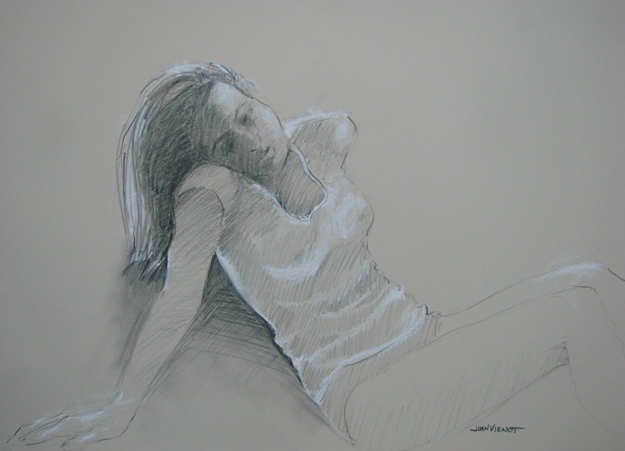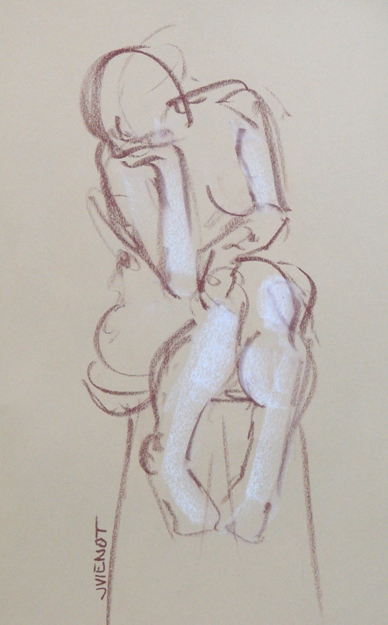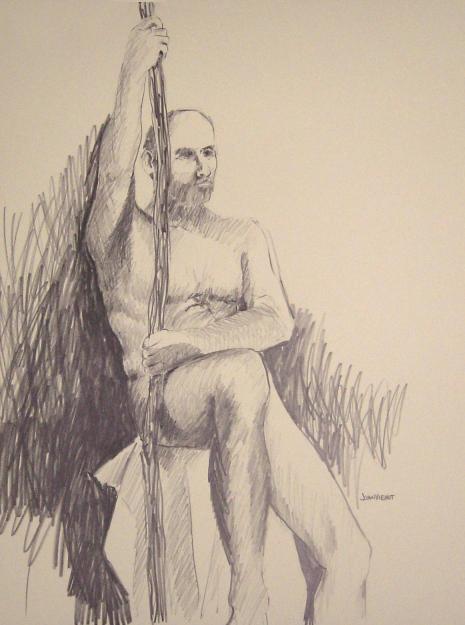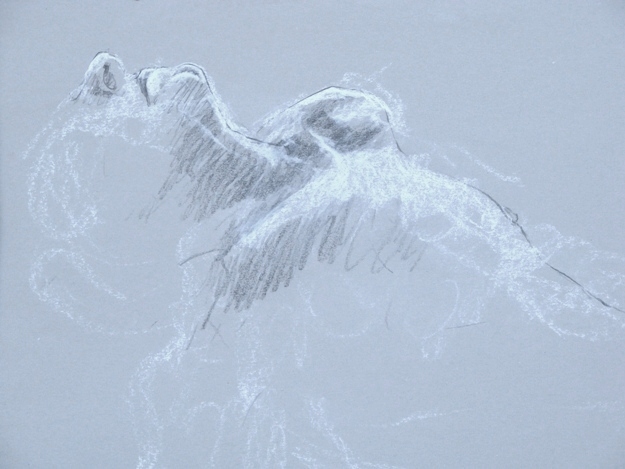
 Figure drawing artists usually work exclusively from nude models. But this week at Studio b., I had the good fortune of being the only artist. So I had my choice. Interestingly, the model had brought tennis gear, and was planning to use it in during the warm-up drawings — he thought we might like the added purposeful action. So I asked him to wear the tennis clothes and keep the racket nearby for the entire session.
Figure drawing artists usually work exclusively from nude models. But this week at Studio b., I had the good fortune of being the only artist. So I had my choice. Interestingly, the model had brought tennis gear, and was planning to use it in during the warm-up drawings — he thought we might like the added purposeful action. So I asked him to wear the tennis clothes and keep the racket nearby for the entire session.
It’s so much easier drawing a clothed model. I can draw the clothing with an extra wrinkle here or there and no one is the wiser. You can’t do that with a nude figure without it becoming grotesque.
The model sat for me for 30 minutes for the drawing at left, and we took a short break, and then he sat for me for another 15 minutes. I like this drawing. I drew the white with Nupastel and the dark values with graphite, on gray Stonehenge.
The drawings below are two of the warm-up gestures, the second one obviously a longer pose than the first, and the third is the top part of the last drawing of the evening.
 |
 |
 |
Most of my images are available for purchase. Contact me if you are interested. — Joan Vienot





































